
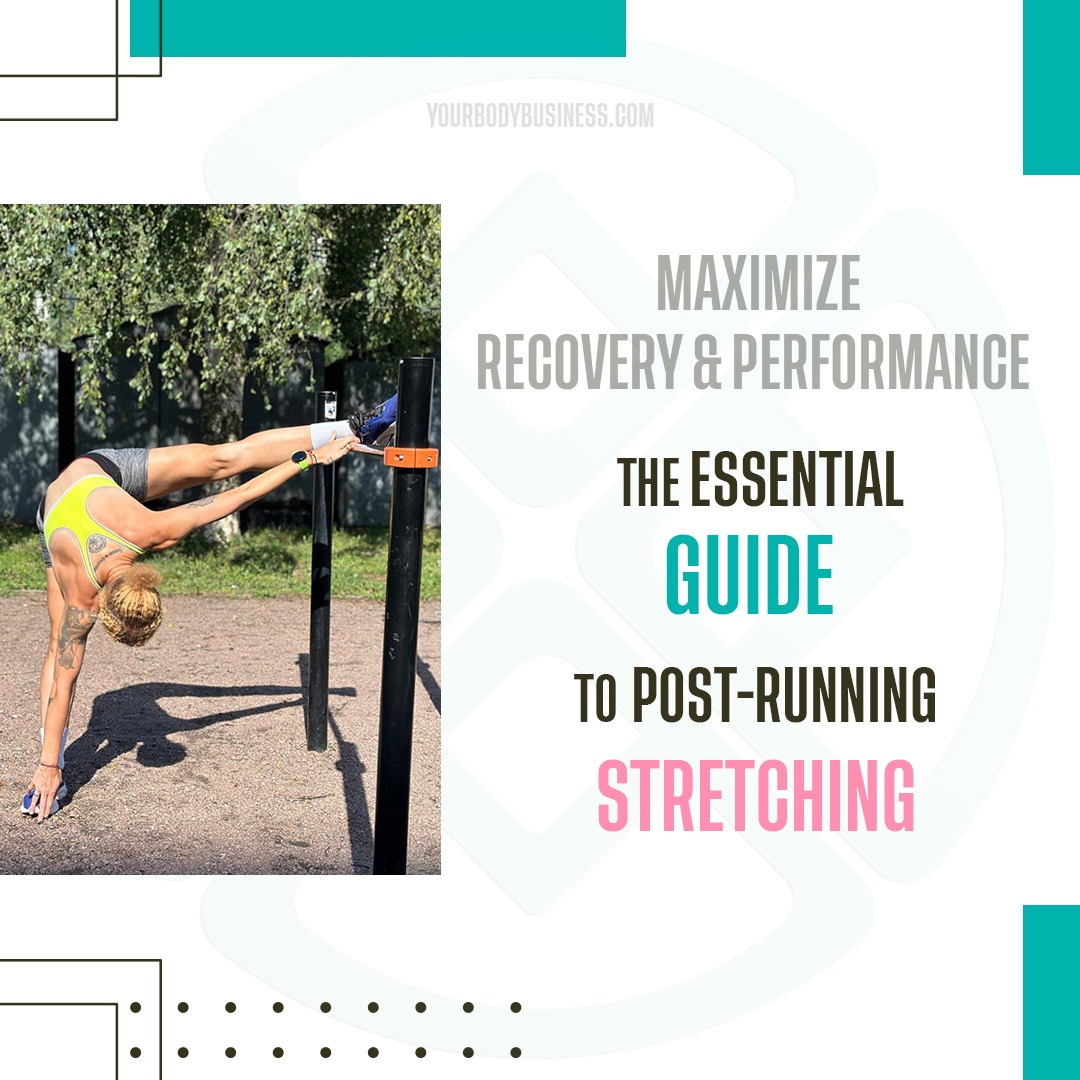
2024.08.08
Stretching your muscles is crucial in the training process. Despite numerous books, articles, and constant reminders from coaches, post-training stretching is often neglected.
This is understandable since the primary desire after a strenuous workout is to head home and relax.
WHY STRETCH AFTER RUNNING?
A proper cooldown, including post-run stretches, is essential. Stretching helps your body and mind relax by increasing blood flow to muscles and lowering your heart rate.
BENEFITS
✅Reduces the risk of injuries
✅Improves flexibility and range of motion in joints
✅Enhances athletic performance
✅Relieves muscle soreness
✅Reduces cramping.
Taking just 5-6 minutes to stretch after your training sessions can be highly beneficial.
WHAT IS A STATIC STRETCHING?
Static stretching involves holding a position for 45-60s, unlike dynamic stretching, which involves movement. It’s important to static stretch after workouts when muscles are warm to prevent strain.
TIPS
✅Stretch after running, not before.
✅Hold stretches for 45-60 seconds for optimal benefits.
✅Relax your muscles during the stretch for a deeper effect.
✅Breathe deeply to help your muscles relax, stretching a bit more with each exhale.
✅Stretch gently to feel mild tension, not pain. If you feel PAIN, ease up or STOP
ESSENTIAL POST-RUN STRETCHES FOR RECOVERY
Include a cool-down routine after every run, just as you should have a warm-up routine before.
Cool down with 5-10 minutes of walking or easy jogging to normalize your heart rate, then spend another 5-10 minutes on post-run static stretching.
You don’t need to do all the stretches each time; instead, focus on a few that target major muscle groups like the quadriceps, hamstrings, IT band, calves, and glutes. Hold each stretch for 45-60 seconds.
The benefits of incorporating these stretches into your routine will be well worth the effort.
1.STANDING QUAD STRETCH
1.Stand with your feet shoulder-width apart.
2. Bend your right knee behind you and bring your right heel toward your right glute.
3. Hold your right ankle or foot with your right hand.
4. Gently pull your heel upwards and toward your glute. Ensure your knees are kept close together.
5. Hold this position for 45-60 s.
6. Switch legs.
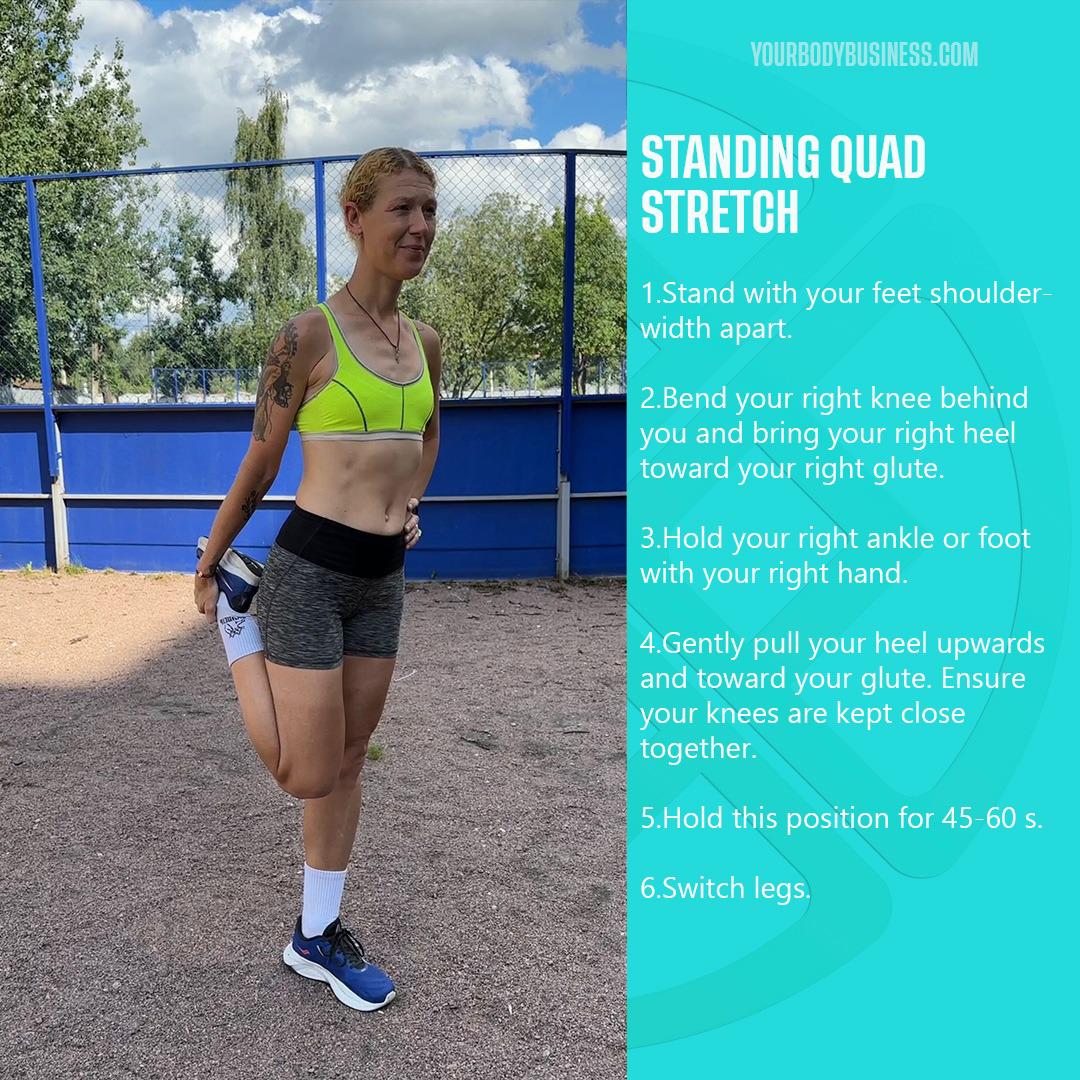
2.CALF STRETCH
1. To begin, stand facing up a flight of stairs or an exercise step.
2. Position yourself so that the ball of your foot and your toes are on the edge of the step. You can hold a railing or wall for extra support.
3. Drop the heel of one foot toward the ground, while bending the knee of the opposite leg. You should feel the stretch in the calf of the leg dropping the heel.
4. Hold for 45-60 s.
5. Switch legs.
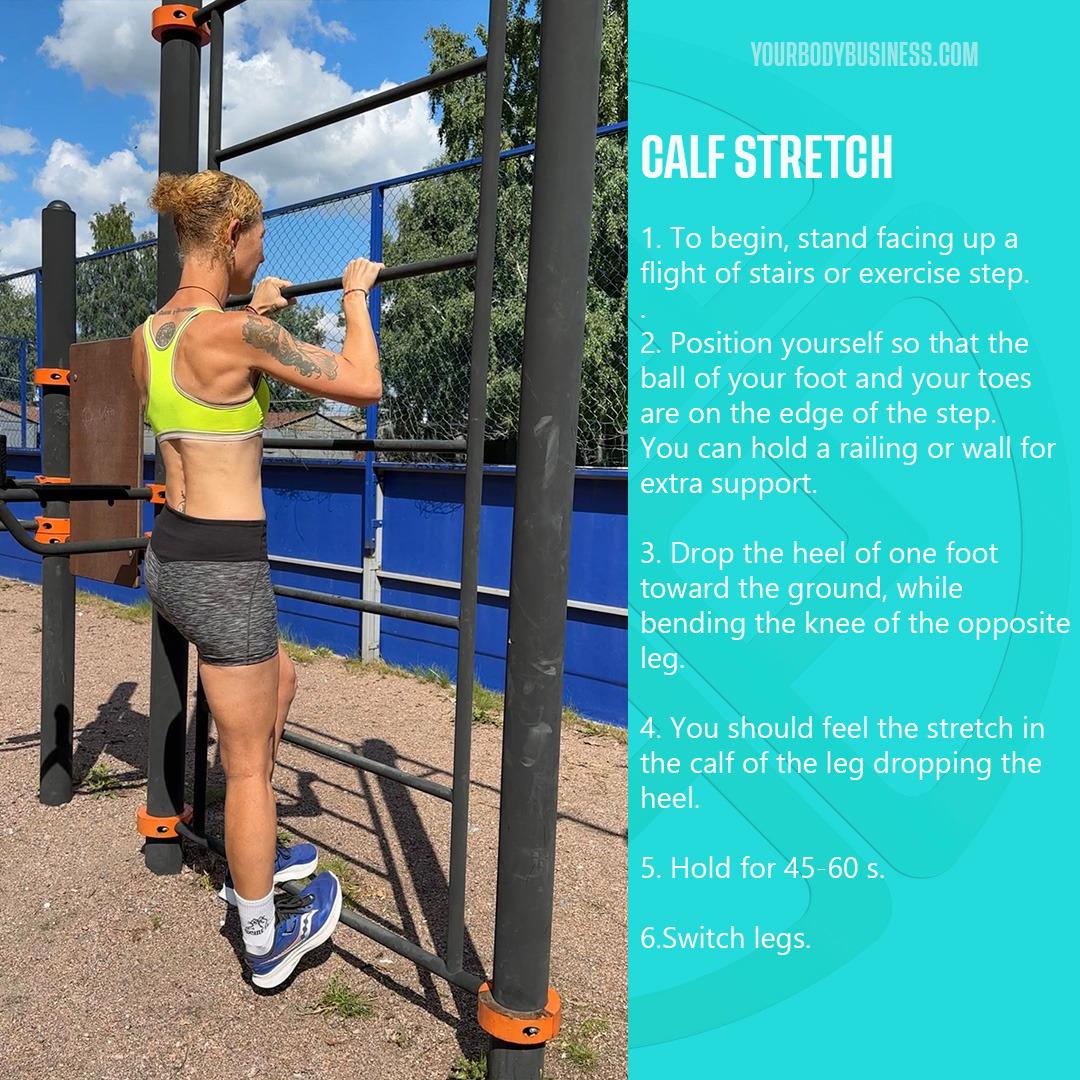
3.LOW LUNGE STRETCH
1. Step into a lunge position.
2. Keep your toes pointed forward and your upper torso straight. Your back leg should be straight back behind you.
3. Press down with your hands and extend the hips forward until you feel a stretch from the front of your hip and the top of your thigh (of your back leg).
4. Hold for 45-60 s.
5. Switch legs.
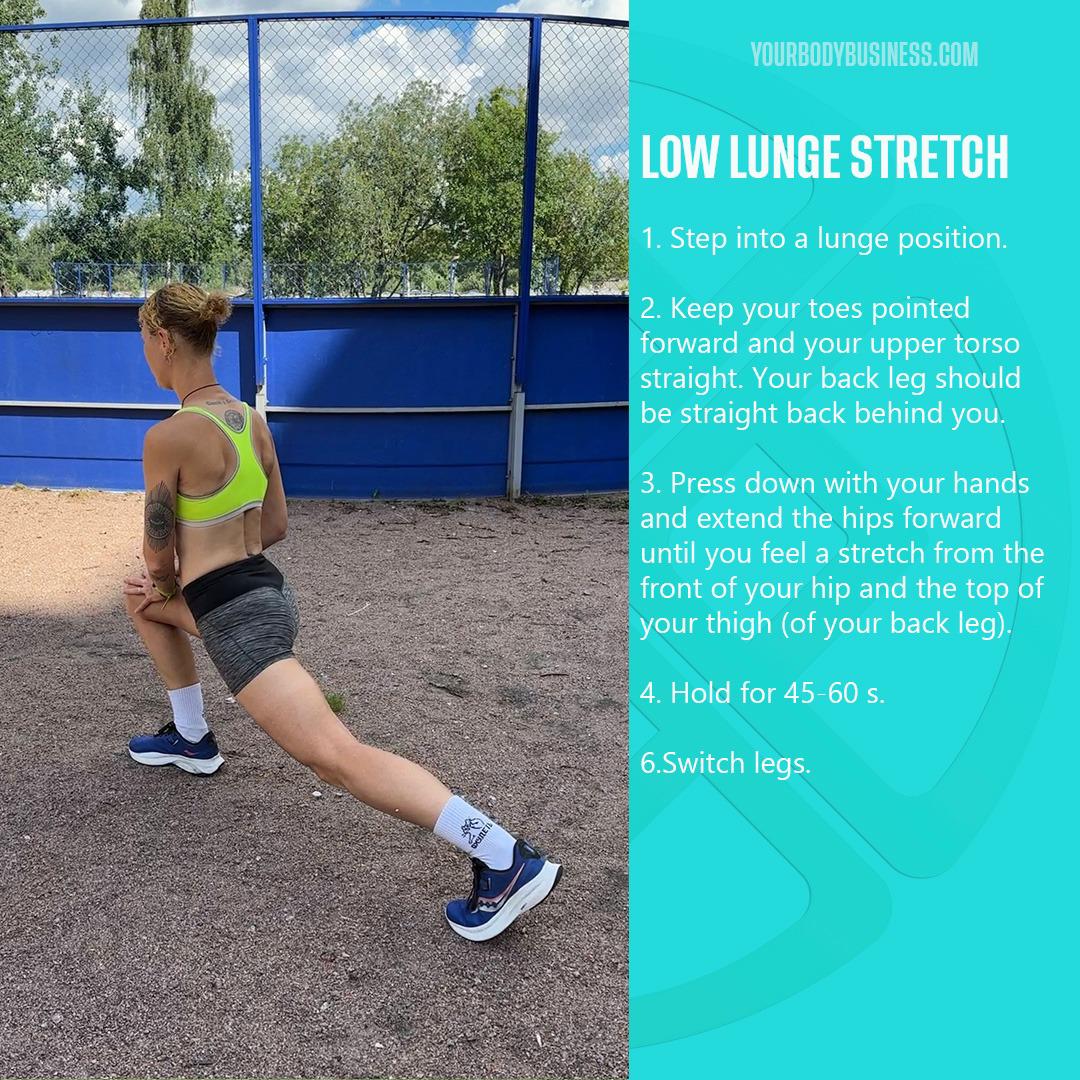
4.IT BEND STRETCH
A common area of tightness for many runners is the iliotibial band (ITB), a tendinous and fascial band that starts at the hip and goes down to your knee.
1. While in an upright position, cross your right leg behind your left.
2. Lean slightly forwards and to your left side until you feel a stretch on the outside of your right leg.
3. Raise your right hand over your head and extend it to your left side.
4. Hold this position for 45-60 s.
5. Switch legs.
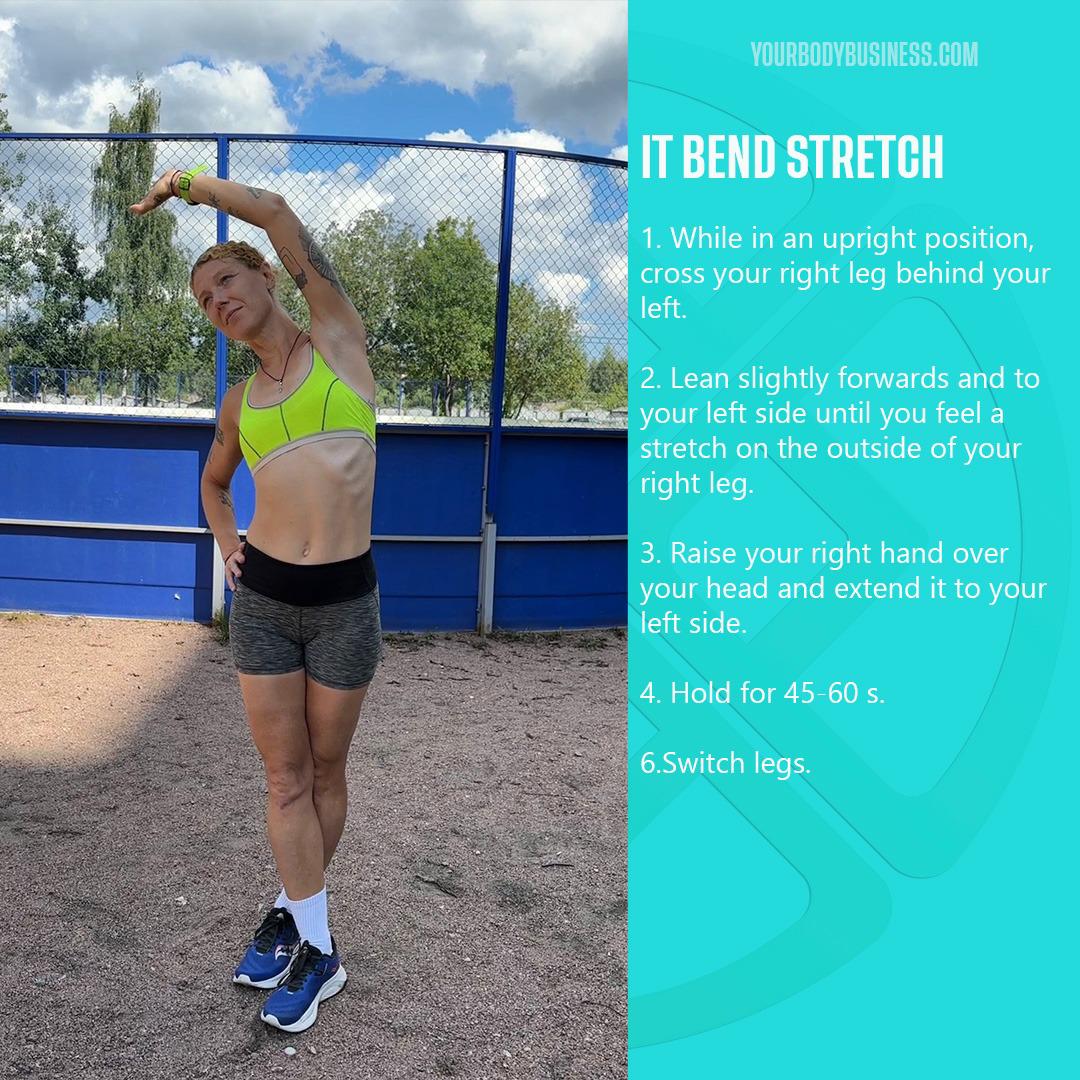
5.STANDING HAMSTRING STRETCH
1. Stand with your feet hip-width apart.
2. Step your right foot forward slightly, placing your right heel on the ground and flexing your foot.
3. Bend your left knee slightly.
4. Bend at the waist and bring your torso toward your extended leg until you feel a stretch, keeping your lower back straight.
5. Hold this position for 45-60 s.
6. Repeat on the other side.
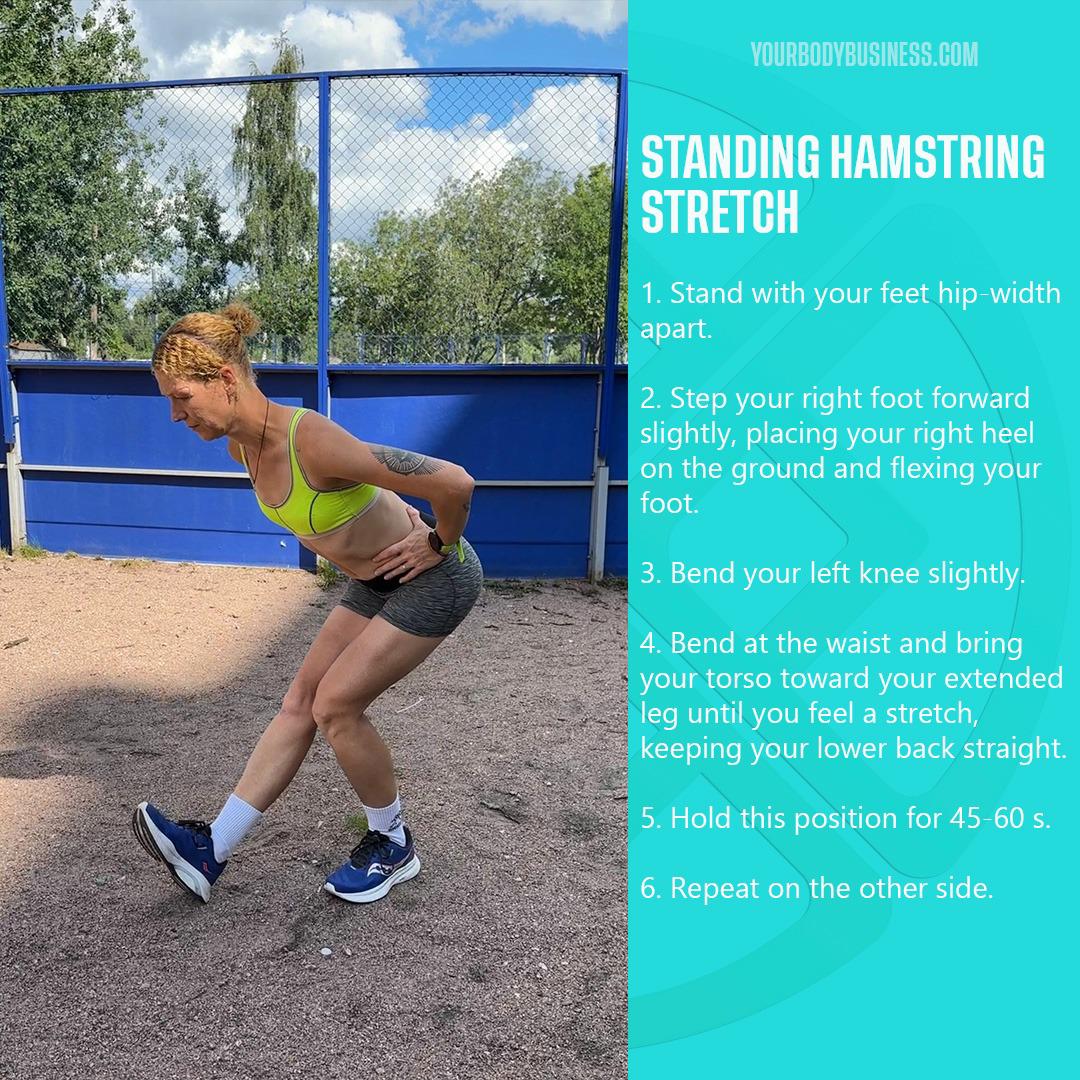
6.STANDING CALF STRETCH
1. Stand with your feet hip-width apart.
2. Place your stretching leg behind you, with your feet, knees and hips facing straight forward.
3. Lean forward, keeping both heels on the ground so you can feel the stretch in your calf.
4. Hold this position for 45-60 s.
5. Switch legs.
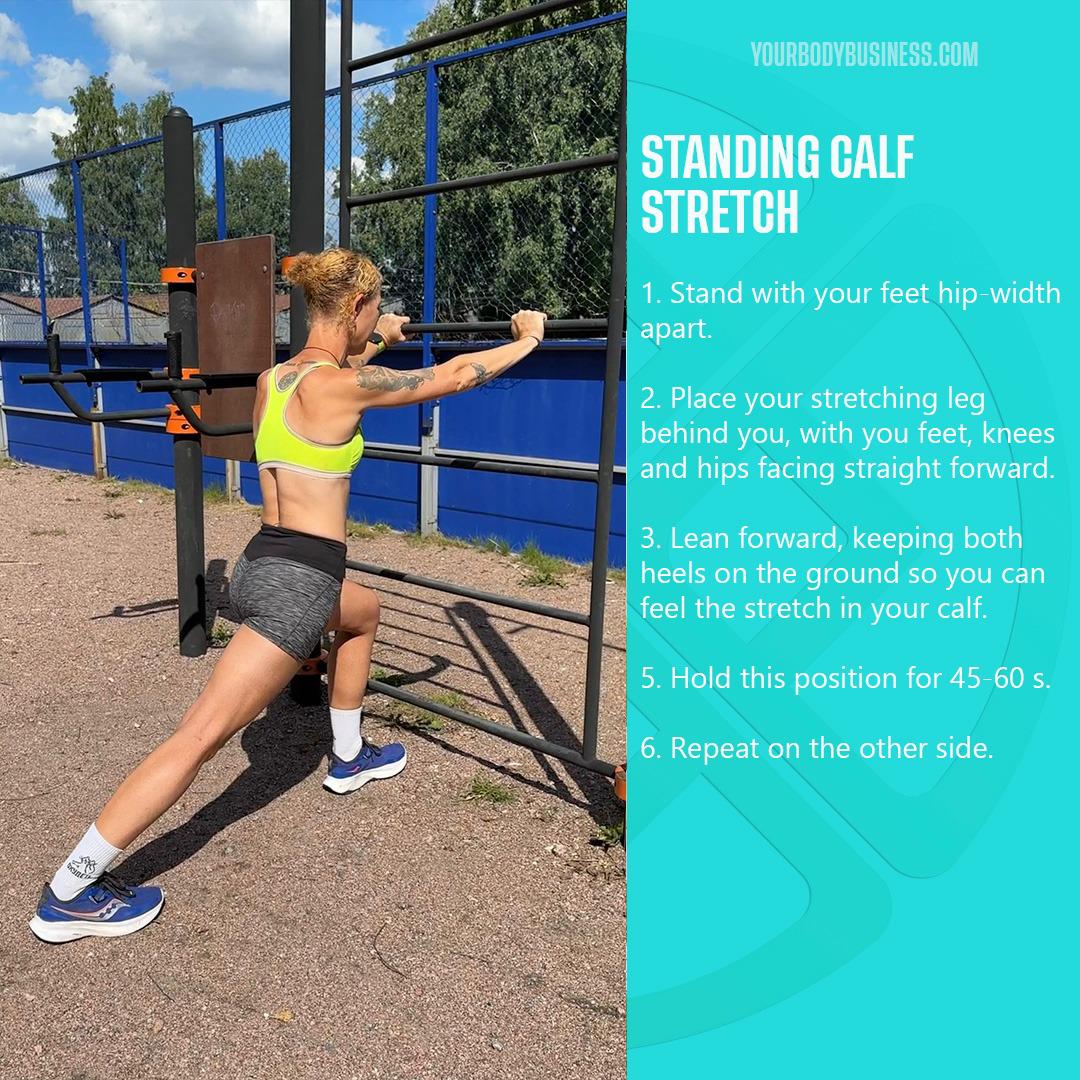
7.STANDING FIGURE 4 GLUTE STRETCH
This one of our post-run stretches takes quite a bit of balance and stability to perform correctly. Therefore, you may need to hold onto something to keep from toppling over or perform it seated or on the floor.
1. Standing on your right leg, bend your left leg at a 90-degree angle, placing your left ankle on your right knee. Keep your right knee slightly bent for better stability.
2. Bend your right knee even more until you reach a squat position.
3. Place your left hand on your left knee and gently push down to feel the stretch.
4. Slightly lean your torso forward, keeping your back perfectly straight.
5. Hold this position for 45-60 s.
6. Repeat on the other side.
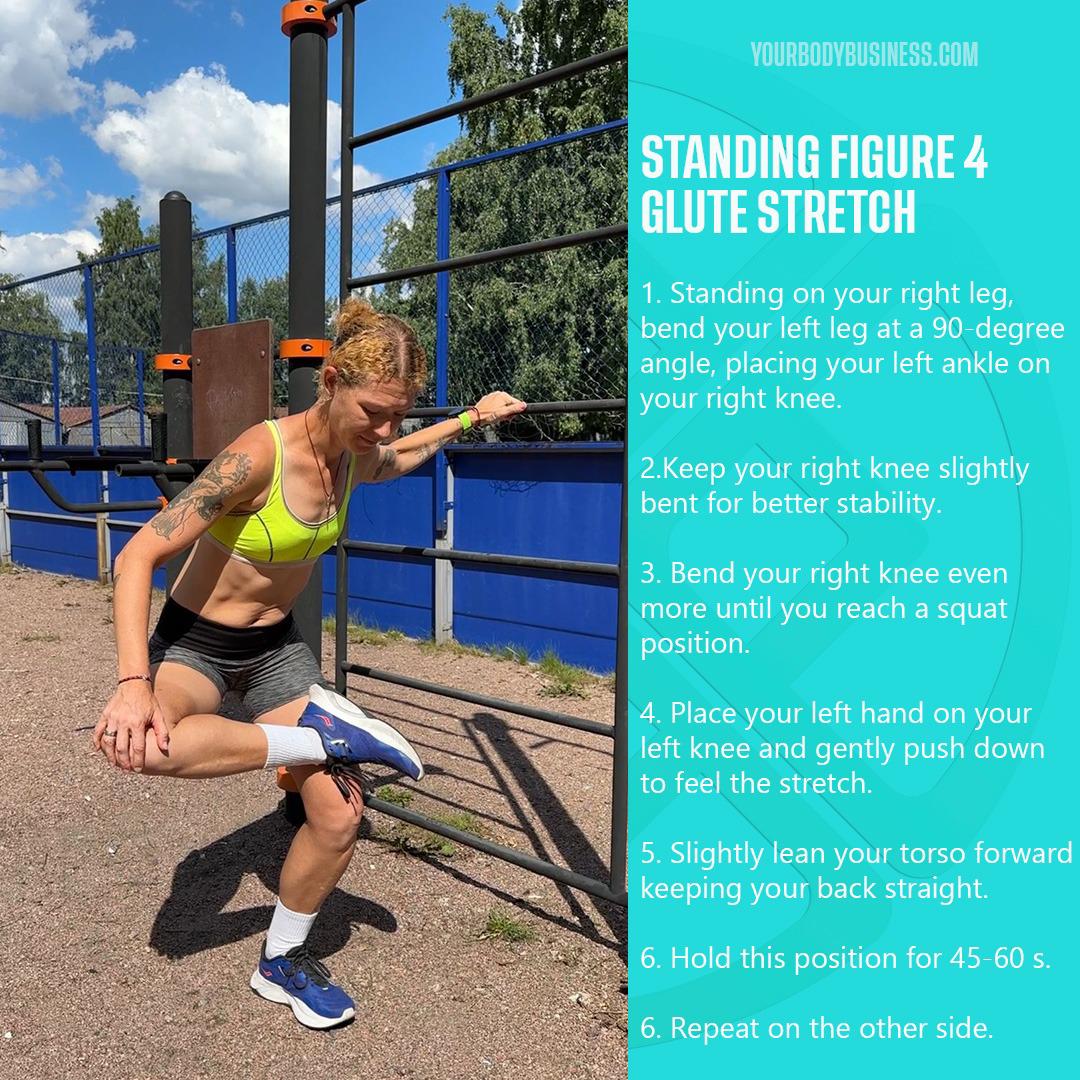
8.LATERAL LUNGE STRETCH
You will feel this post-run stretch in your adductors.
1. Stand tall with your feet facing forward and hips a bit wider than shoulder-width apart.
2. Bend your left knee, hinge at the hips, and sit back to the left side, lowering into a side lunge. You can rest your hands on your left thigh to deepen the stretch.
3. Hold this position for 45-60 seconds.
4. Repeat on the other side.
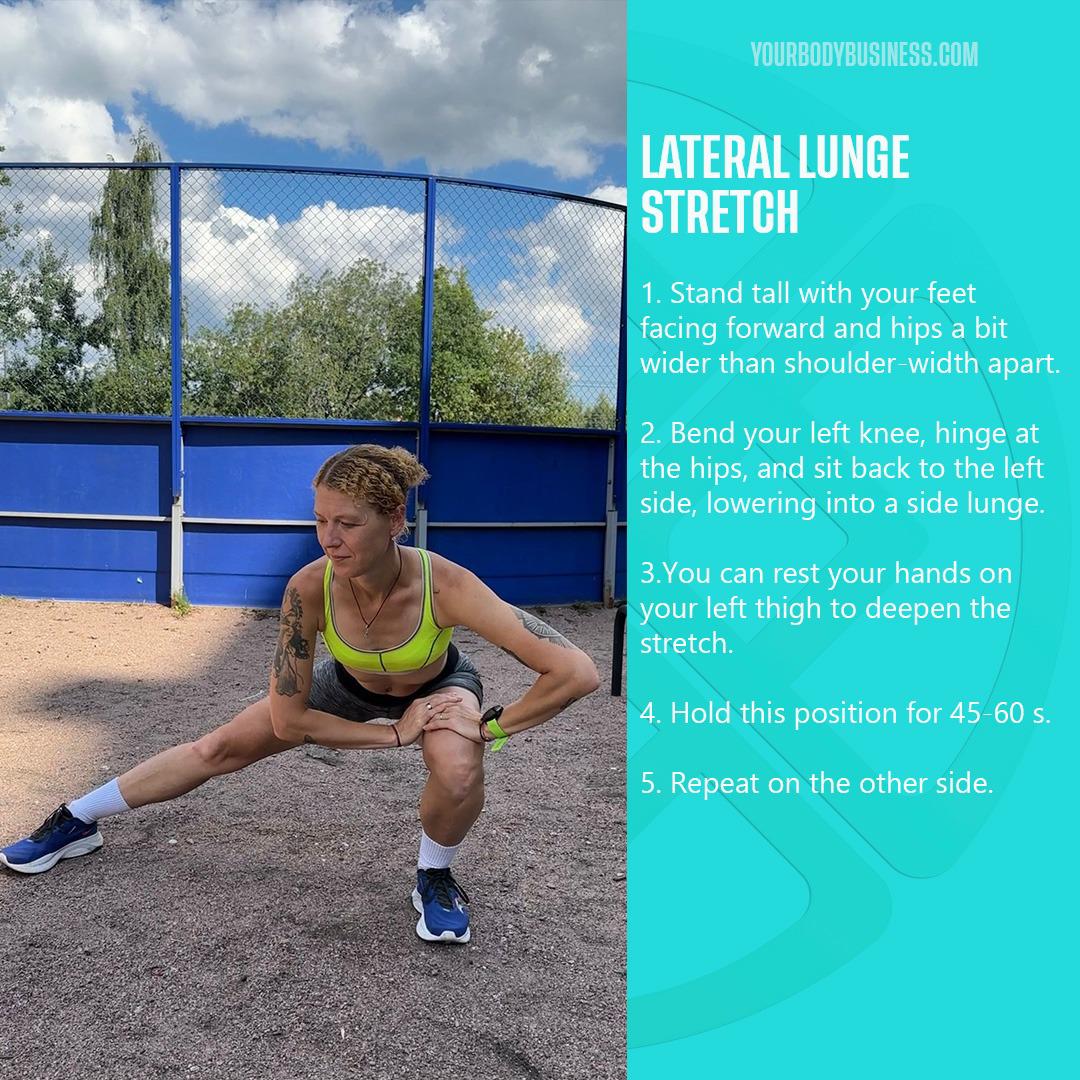
9.STANDING HIP FLEXOR LUNGE STRETCH
1. Stand tall with your feet at hip-width apart.
2. Step forward with your left foot.
3. Keeping both feet flat on the ground, drive your left knee slightly forward while simultaneously arching your torso ever so gently back. You will also feel this stretch in your calf muscle.
4. Hold this position for 45-60 seconds.
5. Repeat on the other side.
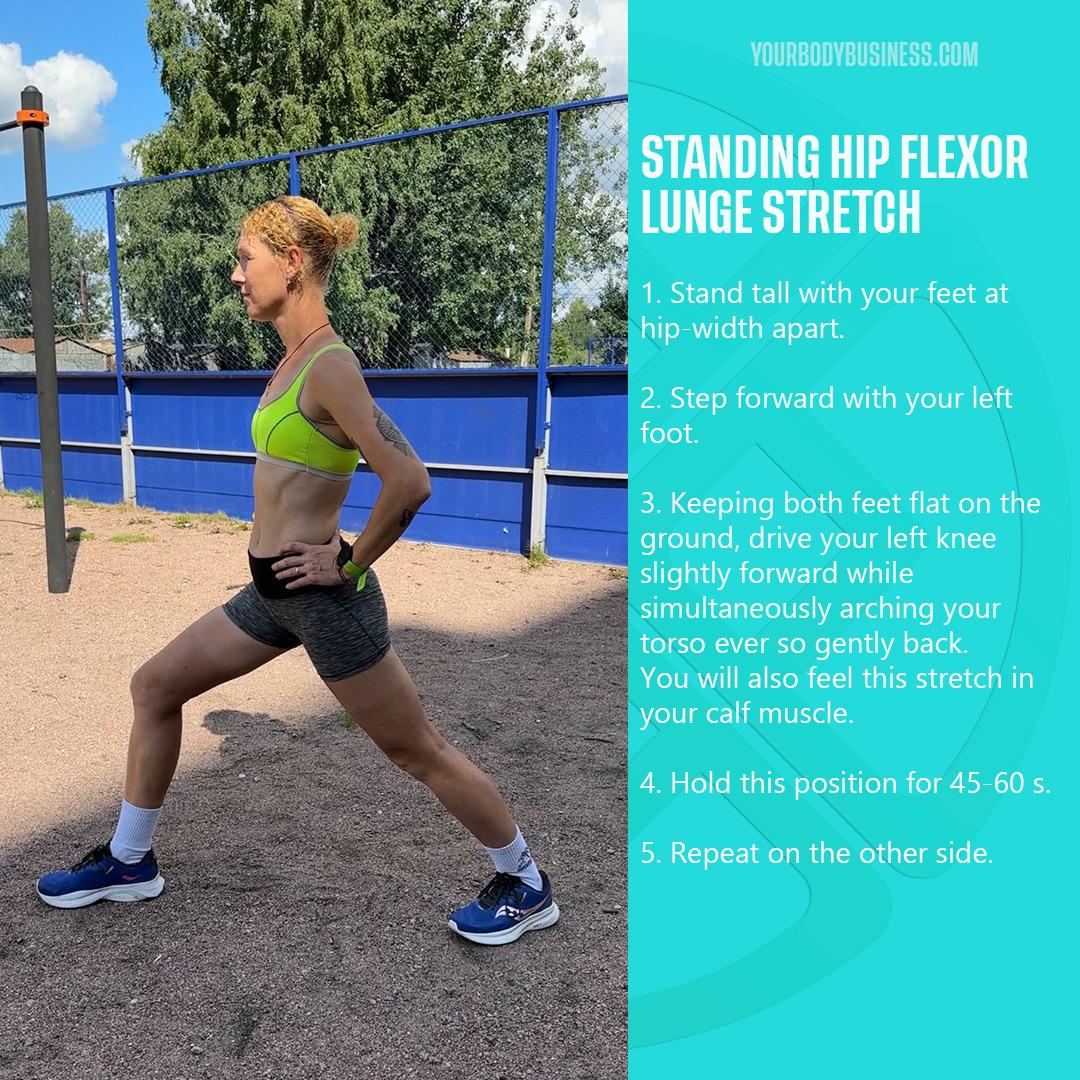
Read more: